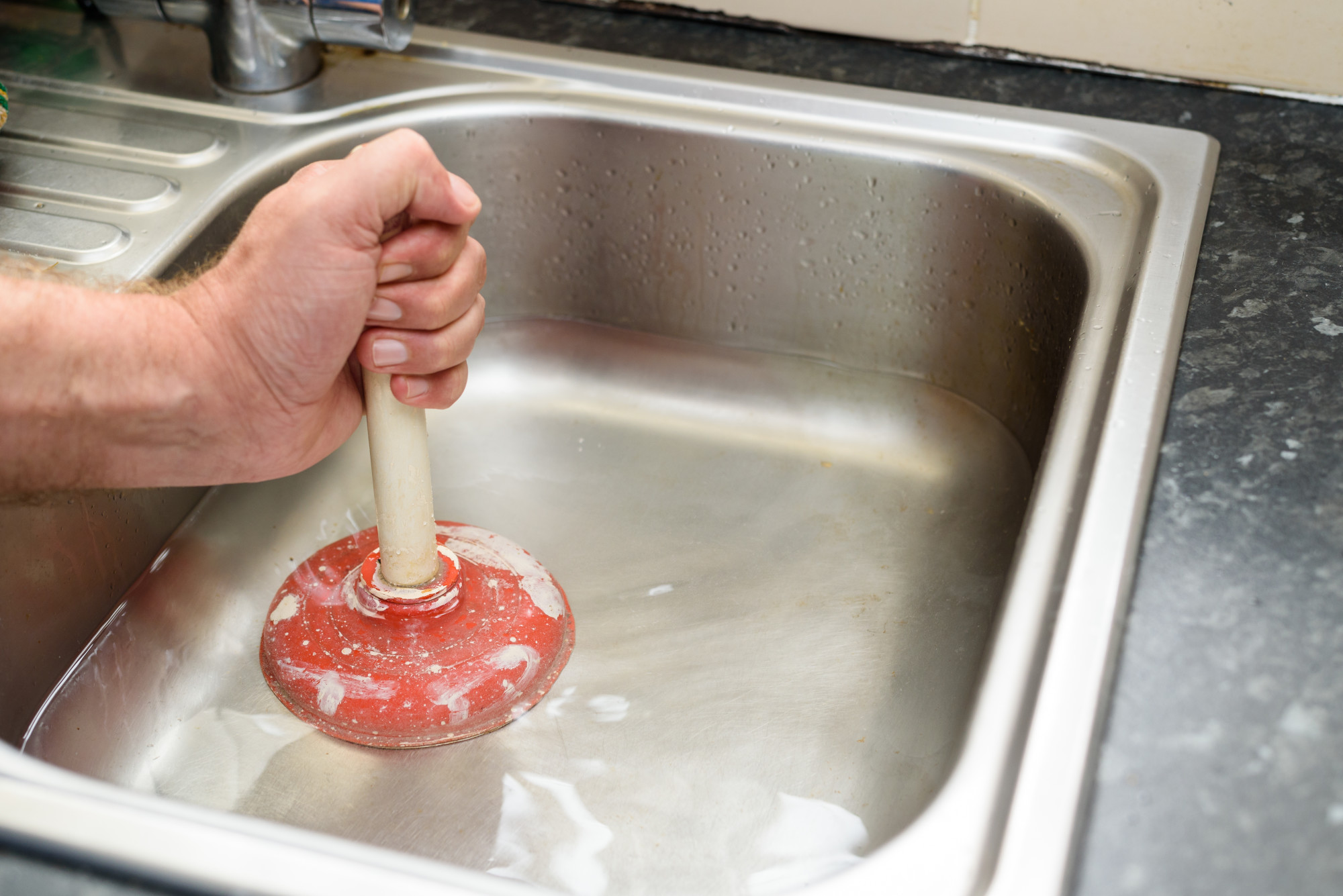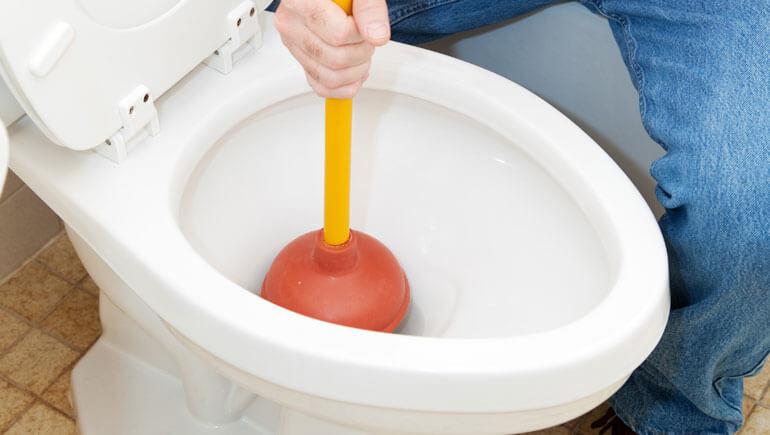We've stumbled upon this great article pertaining to Here's How to Correctly Use a Toilet Plunger below on the web and felt it made perfect sense to share it with you on this page.

Intro
Appropriate upkeep of household drains pipes is essential for avoiding obstructions and making sure smooth water circulation. One of the key devices in every home owner's toolkit is the bettor, together with different drainpipe cleansers made to deal with persistent obstructions successfully. This article discovers how to make use of plungers and drainpipe cleansers successfully to keep your drains pipes flowing openly.
Area 1: Understanding Bettors
Types of Plungers
There are several kinds of plungers available, each created for different types of drains pipes and blocks. The most usual kinds consist of mug bettors, flange bettors, and accordion plungers.
Exactly How Plungers Work
Bettors service the concept of developing stress and suction to remove clogs. When properly used over a drain, they produce a vacuum cleaner that can take out debris or separate obstructions.
Picking the Right Plunger
Selecting the ideal bettor relies on the kind of drainpipe and the nature of the obstruction. Cup bettors are optimal for sinks and bathtubs, while flange bettors are much better matched for commodes as a result of their layout.
Typical Errors with Plungers
Preventing these blunders makes sure reliable plunging: improper seal around the drainpipe, inadequate pressure, and not clearing bordering debris.
Area 2: Using Plungers Successfully
Prep work
Before plunging, make sure the bettor covers the drain entirely and forms a tight seal. Clear any kind of noticeable debris around the drain opening.
Strategy
Start with mild diving movements to develop suction. Increase pressure progressively, utilizing a consistent rhythm. Repeat as necessary up until the drain clears.
Repairing Tips
If plunging doesn't work, attempt readjusting the seal, applying oil jelly for a much better seal, or making use of a various kind of bettor.
Area 3: Recognizing Drain Cleansers
Types of Drain Cleaning Company
Drain pipes cleansers can be chemical or chemical. Chemical cleansers make use of strong chemicals to liquify clogs, while enzymatic cleaners make use of all-natural enzymes to break down organic matter.
Exactly How Drainpipe Cleaners Job
Chemical cleaners respond with obstructions to dissolve them, while enzymatic cleansers break down natural products like hair and grease without damaging pipes.
Safety and security Considerations
Always wear gloves and eye defense when using chemical drainpipe cleansers. Make sure appropriate ventilation and follow supplier guidelines meticulously.
Eco-Friendly Alternatives
Think about utilizing vinegar and cooking soft drink or enzyme-based cleansers for green alternatives that are more secure for pipes and the atmosphere.
Section 4: Using Drainpipe Cleansers Efficiently
Application Techniques
Put chemical cleansers directly into the drainpipe opening. Allow them to benefit the suggested time prior to flushing with hot water. Chemical cleansers ought to rest over night.
Safety measures
Prevent blending various types of cleaners, as this can create poisonous fumes. Never use chemical cleaners together with a bettor, as spilling can take place.
Handling Stubborn Clogs
For persistent clogs, consider making use of a pipes serpent or calling an expert plumbing professional to avoid damage to pipes.
Conclusion
Finally, recognizing exactly how to use bettors and drainpipe cleaners effectively is essential for keeping healthy plumbing systems. By picking the right tools and strategies, house owners can tackle small clogs and stop major plumbing concerns down the line.
4 DIY Ways to Unclog Drains
Wire Hanger
This age-old technique has been used by many an amateur plumber – to much success. Take any wire hanger, deconstruct its shape and leave a small hook shape on the end. Time to go fishing! Remove the shower or sink drain cover and snake the wire into the drain, wiggling and rotating it as you push it through. Dispose of the gunk that you remove and flush the drain with hot water. Rinse with a pan of boiling water for best results.
Plunger
Creating a suction in your drain can break up clogs caused by hair and soap residue build up. First, make sure you are using the correct type of plunger, one specifically for sinks or tubs. They are typically smaller than regular toilet plungers and often have a shallow suction cup. Regular plungers can work too but we’d recommend cleaning them first and finding a way to create better suction over the drain.
Baking Soda and Vinegar
This technique is a classic – and one of the most popular DIY drain unclog methods. Pour one cup of baking soda and one cup of vinegar down the drain and allow it to work its magic overnight. The next morning, flush the drain with boiling water. Repeat if necessary.
Drain Snake/Hair Clog Tool
If you know your clog is caused primary by hair, a drain snake/hair clog tool might be your best option. These tools can be purchased for under $10 at any hardware store and work well so long as the clog isn’t too deep in the drain.
https://www.callcatons.com/blog/four-diy-ways-to-unclog-drains/

Application Techniques
Put chemical cleansers directly into the drainpipe opening. Allow them to benefit the suggested time prior to flushing with hot water. Chemical cleansers ought to rest over night.
Safety measures
Prevent blending various types of cleaners, as this can create poisonous fumes. Never use chemical cleaners together with a bettor, as spilling can take place.
Handling Stubborn Clogs
For persistent clogs, consider making use of a pipes serpent or calling an expert plumbing professional to avoid damage to pipes.
Conclusion
Finally, recognizing exactly how to use bettors and drainpipe cleaners effectively is essential for keeping healthy plumbing systems. By picking the right tools and strategies, house owners can tackle small clogs and stop major plumbing concerns down the line.
4 DIY Ways to Unclog Drains
Wire Hanger
This age-old technique has been used by many an amateur plumber – to much success. Take any wire hanger, deconstruct its shape and leave a small hook shape on the end. Time to go fishing! Remove the shower or sink drain cover and snake the wire into the drain, wiggling and rotating it as you push it through. Dispose of the gunk that you remove and flush the drain with hot water. Rinse with a pan of boiling water for best results.
Plunger
Creating a suction in your drain can break up clogs caused by hair and soap residue build up. First, make sure you are using the correct type of plunger, one specifically for sinks or tubs. They are typically smaller than regular toilet plungers and often have a shallow suction cup. Regular plungers can work too but we’d recommend cleaning them first and finding a way to create better suction over the drain.
Baking Soda and Vinegar
This technique is a classic – and one of the most popular DIY drain unclog methods. Pour one cup of baking soda and one cup of vinegar down the drain and allow it to work its magic overnight. The next morning, flush the drain with boiling water. Repeat if necessary.
Drain Snake/Hair Clog Tool
If you know your clog is caused primary by hair, a drain snake/hair clog tool might be your best option. These tools can be purchased for under $10 at any hardware store and work well so long as the clog isn’t too deep in the drain.
https://www.callcatons.com/blog/four-diy-ways-to-unclog-drains/

Hopefully you enjoyed our piece on How to Use a Plunger to Unclog a Toilet or Drain. Many thanks for finding the time to read our piece. So long as you enjoyed reading our blog entry please be sure to share it. Many thanks for taking the time to read it.
Detail